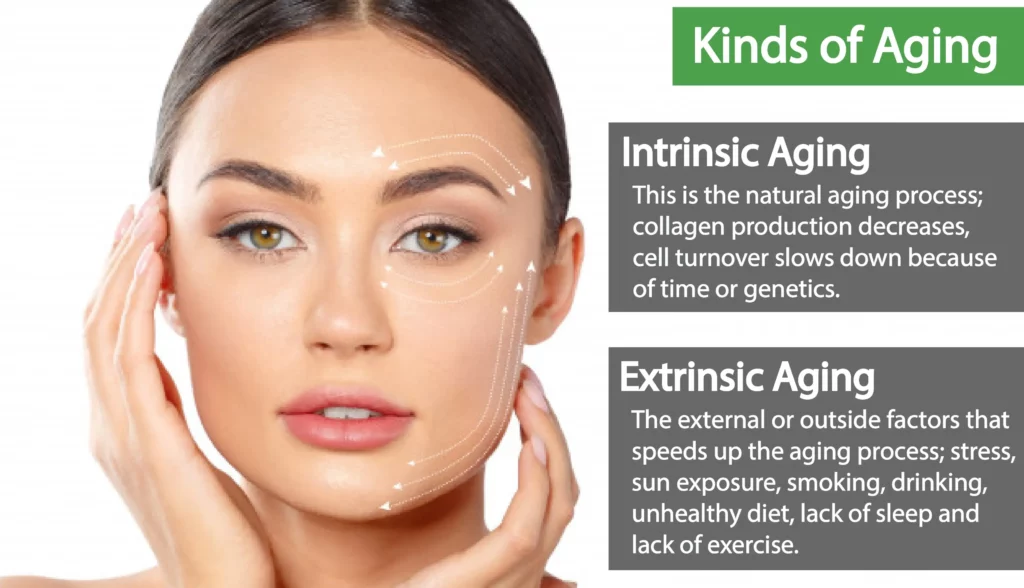PHOTOAGING
How to Treat & Preserve Healthier, Younger Looking Skin

Wrinkles. Sunspots. Sun damaged skin.
If you’ve thought about these skin issues (and how to prevent them), than you’ve thought about photoaging.
Many people are concerned with photoaging skin before they even know what it means. In fact, 30-40% of our patients come in to talk to us about photoaging – they just talk about it different terms:
How should I be taking care of my skin?
How do I prevent or treat wrinkles and age spots?
How do I make sure my skin doesn’t end up looking like my mom’s skin?
We all want younger-looking skin, even if we’re not so young anymore. But you can’t keep your skin looking young and fresh if you don’t understand the effects of sun exposure and premature aging.
Whether you want to preserve or restore the healthy glow of your skin, start by asking the question that matters most: How does sunlight affect the aging of my skin, and what can I do to protect myself?
Here’s what you need to know about photoaging:
WHAT IS PHOTOAGING?
Photoaging is the physical representation of UV and sun damage on our skin. It’s cumulative damage from years of UV exposure that appears as lines, wrinkles, loss of elasticity, and pigmentation problems.
Often times we blame these issues on the natural aging process. But in reality, photoaging is when the skin prematurely ages because of the damage it has accumulated.
WHAT CAUSES PHOTOAGING?
Photoaging is caused by light exposure, but this exposure doesn’t affect all people the exact same way. When we think about the causes of photoaging, we have to consider both intrinsic and extrinsic factors.

Intrinsic factors in our genetics play a significant role in how susceptible we are to photoaging skin. Unfortunately, some of us are more predisposed to be impacted by our exposure to harmful rays.
How does your family age? Genetically, how do you react to UV exposure? If you have a family history of premature aging or if you are more sensitive to sun exposure than most people, you’ll need to take extra precautions against the external factors that contribute to photoaging.
Extrinsic factors consider how our environment affects our skin. The strongest extrinsic factor is obvious: the sun.
Most of us know by now about sun exposure and premature aging. How does sunlight affect the aging of the skin? We can answer that by looking around us, particularly at older adults who didn’t wear sunscreen when they were younger. We see wrinkles, sagging skin, sun spots, and even skin cancer that years of tanning brought about.
Sunlight isn’t the only external contributor to photoaging. Blue light exposure can be harmful to our skin as well. Yes, that means that chronic high exposure to the blue light projected from your phone, computer, tablet, and television screen will speed up the aging process of your skin.
Smoking also drastically affects skin. We often associate smoking with cancer of the internal organs, but it also plays a significant role in how we age and our likelihood of developing skin cancer. As it weakens collagen (the fibers that keep your skin strong and flexible) and restricts blood flow (lessening the oxygen and nutrients flowing to your skin), your skin isn’t able to heal from the light exposure you’ll inevitably receive.
WHAT AGE SHOULD I START TRYING TO PREVENT PHOTOAGING SKIN?
It’s never too early to start thinking about sun exposure and premature aging. A mentor of mine used to say, “Nothing looks better in your 50s than sunscreen in your 20s.” Most of the damage we see in older adults is the cumulative damage from childhood and young adult years. The earlier someone starts using good sun protection, the better their skin will age.
WHAT TREATMENTS AND PROCEDURES?
For younger patients concerned with fine lines or age spots, chemical peels, or a resurfacing laser treatment are preferred.
For more mature patients who need to treat deeper lines and more extensive photoaging, we discuss the use of more aggressive treatments including deeper chemical peels.
TOPICAL TREATMENTS
Patients also have options for treating their photoaging skin at home. The most affordable and easiest treatment plan is an effective topical skin regimen. No matter your age, a consistent plan for at-home skincare works to your advantage. Some of these products can be found over the counter, though some may need to be prescribed or purchased through your physician for higher, more effective strength creams.
Not sure where to start? I recommend the ABC plan:
A: Vitamin A — Apply this at night. Vitamin A works to reverse past skin damage and rejuvenate the skin.
B: Burn — Wear sunscreen to prevent sunburns as a means to protect your skin from further damage.
C: Vitamin C — Apply Vitamin C or other topical antioxidants daily to help reverse skin damage and prevent its visible effects.
WHAT CAN I DO TODAY TO PREVENT FUTURE PHOTOAGING?
Prevention always works better than treatment. We know that being in the sun is unavoidable, particularly if you love the outdoors or live in a place with strong UV rays. Just be smart about it. Use your sunscreen and wear sun-protective clothing during your time in the sun. The best way to treat sun aging skin is to prevent damage before it starts.
